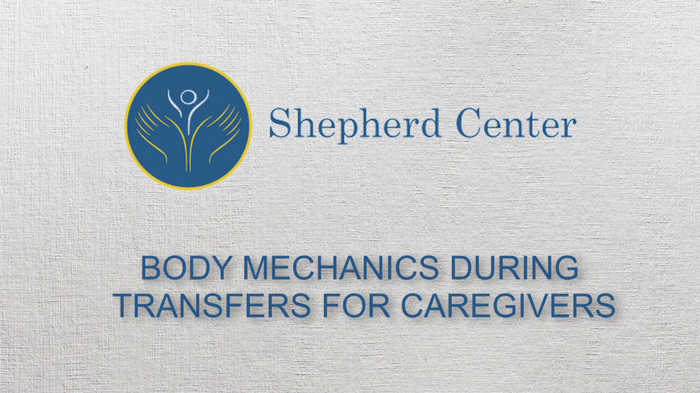General Considerations
- Allow the patient to help as much as possible.
- Estimate the patient’s weight and mentally practice.
- Make sure that the floor is free of any obstacles or liquids.
- Keep your feet shoulder width apart.
- Keep the person (or object) as close to your body as possible.
- Tighten your stomach muscles.
- Bend knees and hips, and keep your back straight throughout the movement.
- Lift with your legs, NOT your back.
- Do not twist your back as you lift. To turn when lifting, pivot your feet.
- If you have doubts, ASK FOR HELP!
Key Points for Body Mechanics During Transfers
- Use proper body mechanics
- The preferred position for assisting during depression or sliding board transfers is to kneel, using a pillow or towel roll under the knee for comfort.
- Keep your back straight throughout the transfer to avoid bending or straining your back.
- Get as close to the person as possible while still allowing him/her to lean forward as needed to assist with the transfer.
FULLY DEPENDENT TRANSFERS:
(Caregiver is standing)
- Position patient appropriately for transfer
- While standing in front of patient, maintain proper posture with your back straight and knees bent. Hold a strong abdominal contraction.
- Position your body close to your loved one to decrease strain on your back.
- Before movement, contract your abdominal muscles to protect your back.
- Use your knees and your lower body during transfer to decrease strain on your back.
ASSISTED TRANSFERS:
(Caregiver is kneeling)
- This is an alternative position that can be assumed when your loved one is able to assist.
- While kneeling, maintain proper body mechanics, including keeping your back straight and keeping your loved one close to your body. Avoid twisting your back throughout the motion.



